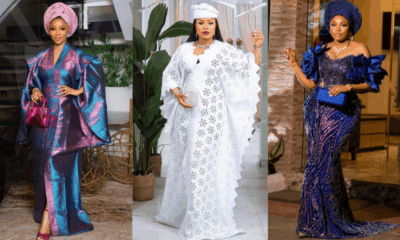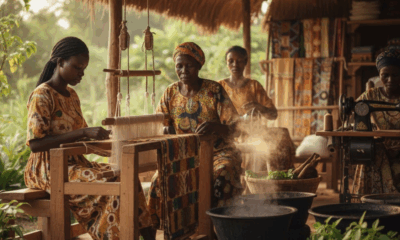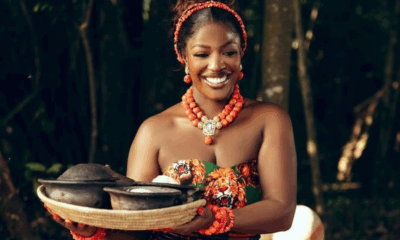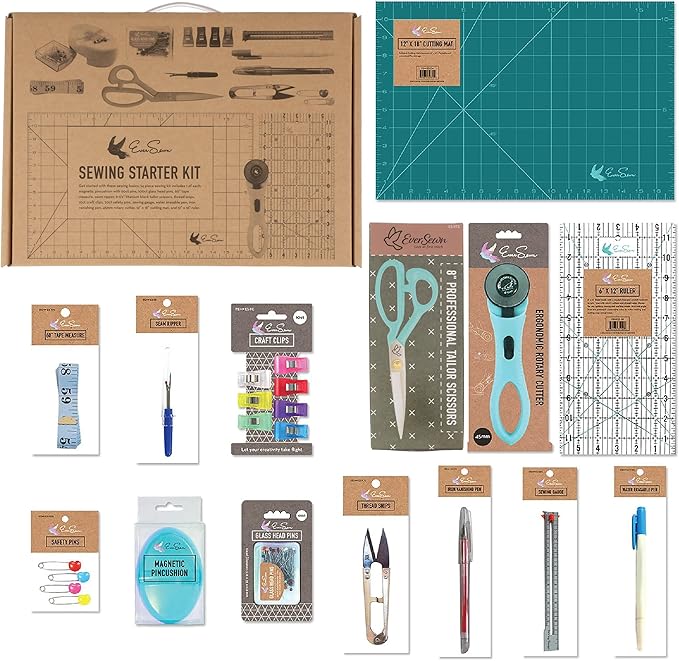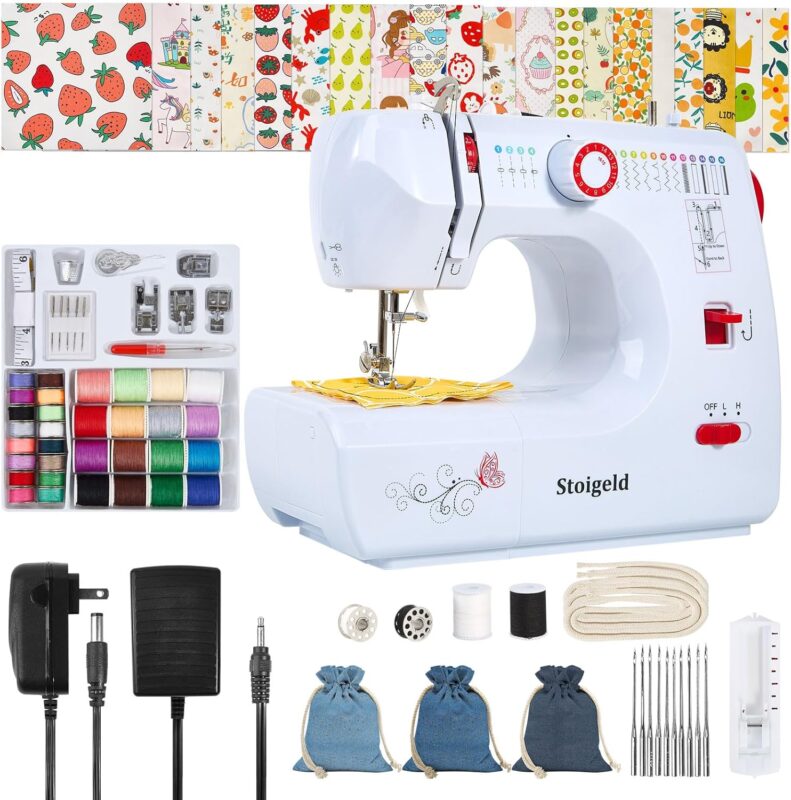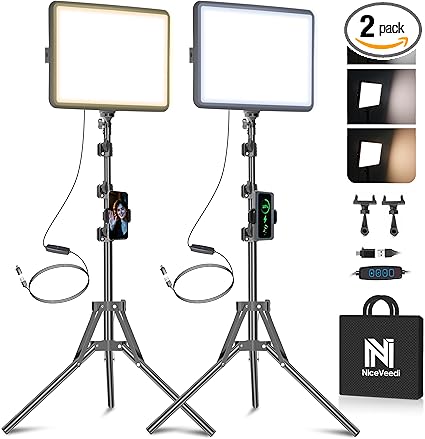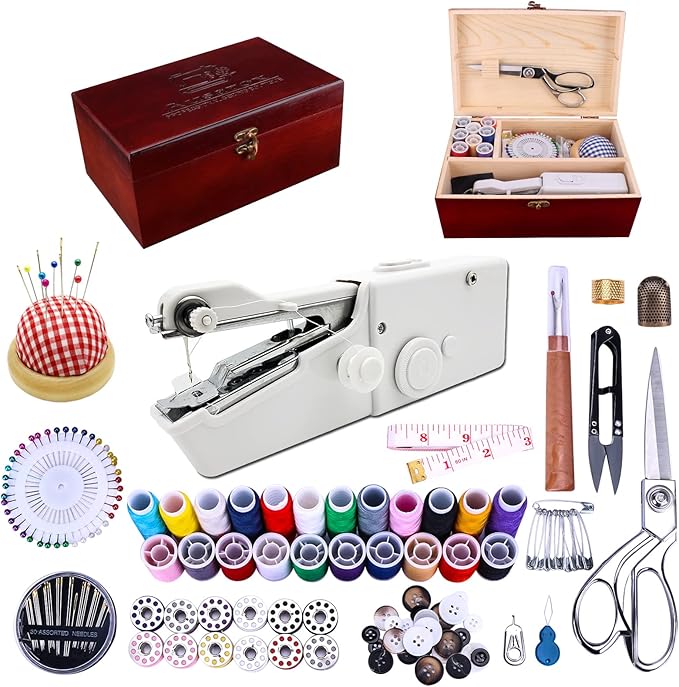LUXURY STYLE
Afrocentric Luxury as the Next Frontier in Sustainable Fashion

African fashion is rewriting the rules of global luxury design, propelled by a new generation of designers who intertwine the continent’s cultural richness with cutting-edge creativity. Afrocentric luxury is more than an aesthetic—it’s an authentic expression of identity, sustainability, and innovation that is reshaping the future of haute couture and conscious consumerism.
ALSO READ: 8 Female Designers Shaping African Fashion Global Style
The Power of Identity and Craftsmanship
At the heart of Afrocentric luxury lies a deep sense of identity and storytelling. African designers are reimagining luxury through a cultural lens, transforming traditional artistry into contemporary masterpieces.
From Ghana’s Christie Brown to South Africa’s Rich Mnisi, these visionaries blend indigenous techniques, handwoven textiles, and bold patterns with modern silhouettes, proving that Africa’s heritage can coexist with global sophistication.
Their collections celebrate authenticity—rooted in the textures, colors, and narratives of the continent—while pushing the boundaries of design innovation. The result is a new kind of luxury: one that honors ancestry and craftsmanship while speaking fluently to the global fashion elite.

ALSO READ: 15 Jewelry Statement Pieces To Showcase Your African Heritage
Celebrity Endorsement and Global Reach
The world has taken notice. International icons like Beyoncé, Naomi Campbell, and Zendaya have championed African brands, helping propel them into the luxury mainstream. Beyoncé’s collaboration with designers such as Tongoro and Loza Maléombho, for instance, placed African design at the center of pop culture, while Naomi Campbell’s advocacy for African fashion weeks has brought global visibility to the continent’s creative scene.
This international spotlight has shifted perceptions—Africa is no longer seen merely as a source of raw materials but as a creative powerhouse, producing some of the most original, luxurious, and ethically made fashion in the world.
ALSO READ: Six African Icons Designers Reshaping Global Fashion in 2025
Sustainable Innovation: The Core of Afrocentric Luxury
Beyond style and visibility, sustainability forms the backbone of Afrocentric luxury. African designers are pioneering ethical and environmentally conscious practices that challenge the fast fashion model dominating global markets.
Many brands emphasize slow fashion, using locally sourced fabrics, natural dyes, and biodegradable materials. Emerging technologies are also reshaping the industry.
AI-driven design, digital sampling, and 3D printing are being integrated with traditional handcraft, allowing designers to reduce waste while preserving artisanal techniques passed down through generations.
This unique blend of innovation and heritage positions African fashion as a leader in sustainable luxury, appealing to a new generation of environmentally aware consumers.

The Expanding African Luxury Market
Africa’s luxury market is booming. Projected to reach $6.44 billion by 2025, cities like Lagos, Nairobi, and Cape Town are becoming vibrant luxury hubs. High-end malls, concept stores, and local fashion districts are redefining how African consumers engage with luxury.
At the same time, the rise of e-commerce and digital marketing has enabled African brands to connect directly with global audiences. This growth not only strengthens local economies but also positions Africa as a formidable player in the international luxury market—one that leads with sustainability, creativity, and cultural pride.
Conclusion : Redefining Global Luxury Through African Eyes
African fashion is not merely an emerging trend—it is the future of global design. By merging tradition, innovation, and sustainability, Afrocentric luxury is setting new standards for what true luxury means in the 21st century.
As the world gravitates toward ethical consumption and cultural authenticity, Africa stands at the forefront, offering a model where luxury is both beautiful and responsible. Afrocentric luxury embodies a vision of the future where craftsmanship, community, and consciousness coexist—redefining global fashion from the roots up.
LUXURY STYLE
How African Fashion Brands Are Outsmarting Western Giants
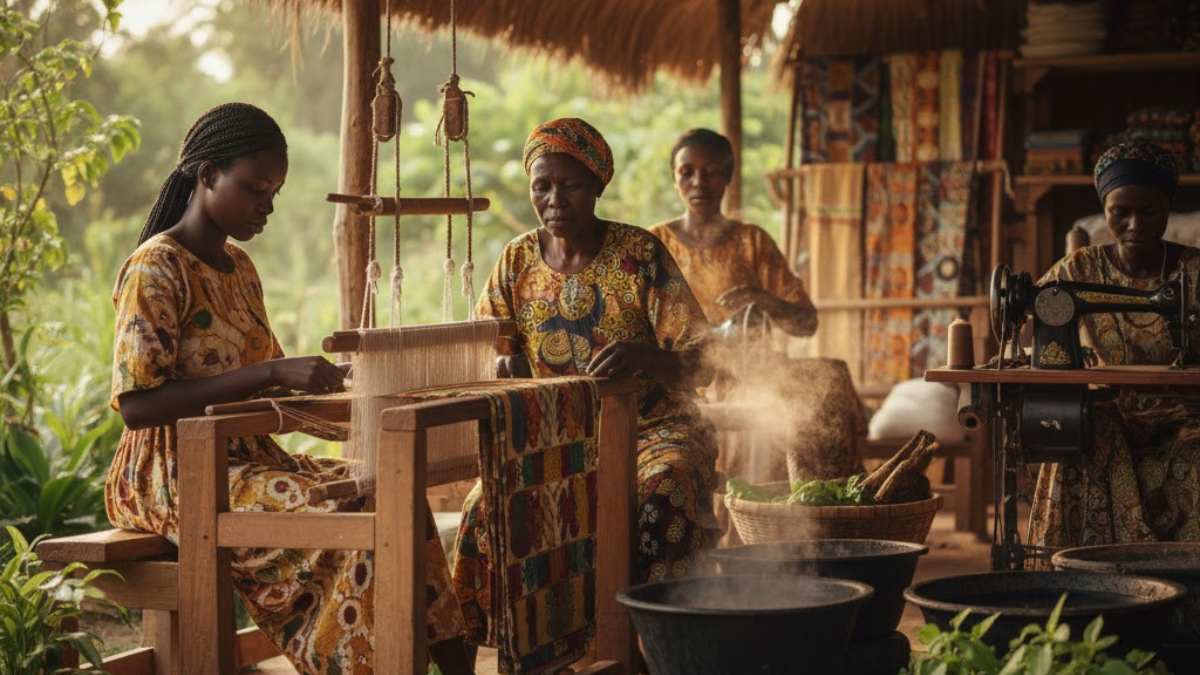
African fashion is no longer confined to local markets—it’s redefining luxury and innovation worldwide. From Lagos to Paris, Nairobi to London, designers across the continent are blending heritage with modernity, captivating global audiences, and outperforming Western giants.
From Ankara and Kitenge to Mudcloth and Kente, these designers are reclaiming African aesthetics from being seen as “ethnic” to being recognized as luxury, modern, and global. But as the global appetite for African fashion grows, so does the need for strategic brand positioning — one that balances authenticity with scalability, tradition with technology, and culture with commerce.
If you are building a new African fashion label, this guide will show you how to transform your creative vision into a sustainable, world-class brand.
1️⃣ Tell Your Story — Authenticity Is Your Luxury
Your heritage is your greatest creative asset. African designers are winning global hearts by embracing their roots—through fabrics, patterns, and stories that carry meaning.
Use your brand to celebrate identity, history, and values. Whether you design with Kente, Adire, or Ankara, each fabric tells a story of origin and culture. Western fast fashion may copy prints—but not purpose.
Pro Tip: Develop a “brand story” page on your website that shares your inspiration and heritage. Customers buy emotion, not just fashion.


2️⃣ Innovate Sustainably — Design for the Future
Sustainability is the heartbeat of modern fashion—and African designers are naturally positioned to lead. Traditional craftsmanship already embodies sustainable practices: hand-dyeing, weaving, and minimal waste production.
Embrace eco-friendly textiles such as organic cotton, raffia, or recycled materials. Partner with artisans and cooperatives to promote ethical employment and preserve craft heritage.
ALSO READ: 8 Female Designers Shaping African Fashion Global Style
- Eco-Friendly Sewing Kits for Designers – perfect for small-batch sustainable collections.
- Organic African Cotton Yards on Etsy – ideal for eco-conscious designers.
- Natural Dye Starter Kit – create earthy, chemical-free hues in your studio.
3️⃣ Master the Digital Runway
In today’s market, your Instagram feed is your runway. African fashion entrepreneurs are leveraging social media and e-commerce to reach global buyers with minimal cost.
New designers can start small—posting authentic, well-lit visuals that showcase craftsmanship. Established brands should invest in e-commerce platforms like Shopify or Wix to sell internationally and accept diverse payment methods.
- Content Creator Lighting Kit – achieve studio-quality photos and videos.
4️⃣ Network Beyond Borders
Visibility is currency in fashion. Join African fashion weeks (like Lagos, Dakar, Johannesburg, or Accra) and participate in international collaborations. Partner with stylists, diaspora influencers, and global fashion media to amplify your voice.
Collaborations help your brand cross markets—and continents.
- Online Fashion Business Course – Skillshare – learn branding, merchandising, and marketing.
- Compact Travel Sewing Machine – stay creative during travel or pop-up exhibitions.

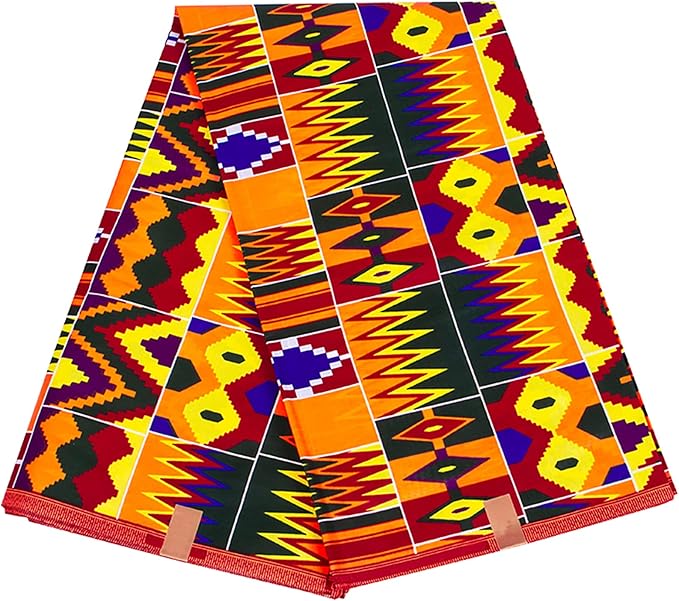
5️⃣ Balance Heritage with Smart Business
Artistry must meet strategy. African fashion success stories—like Tongoro Studio, Orange Culture, and Christie Brown—combine strong creative direction with business discipline.
Invest in:
- Digital bookkeeping
- Supply chain optimization
- Pricing strategy analysis
- Excellent customer care
- QuickBooks for Small Businesses – track sales and expenses easily.
- Inventory Management Templates – keep production organized.
- Adobe Illustrator Fashion Design Software – perfect for pattern creation and digital sketches.
ALSO READ: Top 10 African swimsuit designers to checkout


6️⃣ Build Resilience Through Collaboration
Fashion thrives on community. African designers can overcome resource challenges through shared studios, cooperatives, and partnerships. Pooling resources reduces costs while increasing production capacity.
Explore funding opportunities from:
- African Development Bank’s creative grants
- Tony Elumelu Foundation
- Mastercard Foundation Creative Enterprise support
Collaboration doesn’t dilute creativity—it amplifies it.
7️⃣ The Future: African Fashion as Global Luxury
Luxury is being redefined—and it now speaks with an African accent. Consumers want craftsmanship, culture, and conscience—values Africa offers in abundance.
Brands like Imane Ayissi, Lukhanyo Mdingi, and Thebe Magugu prove that African fashion isn’t an emerging category—it’s a leading one.
For entrepreneurs, the moment is now to create, scale, and globalize. For established designers, the mission is to refine, innovate, and expand sustainably.
✨ Conclusion: Lead the Next Fashion Renaissance
Africa’s fashion narrative is no longer confined to exoticism — it’s about innovation, influence, and identity. The world is watching, not out of charity, but out of admiration.
As you position your fashion brand, remember this: your story is your power, your quality is your passport, and your heritage is your crown.
The future of global fashion is being written in African fabric — and the next chapter begins with you.
LUXURY STYLE
ALGERIAN TRENDS STYLES YOU MUST HAVE

Step into Algeria and you’ll discover a nation where the echoes of ancient civilizations harmoniously blend with the pulse of modern life. This vibrant North African country, rich in history and diverse cultural influences, continues to redefine its aesthetic landscape.
From the intricate artistry of its historical empires to the dynamic spirit of its cities, Algeria’s unique identity is shaping trends that are both deeply rooted in tradition. This curated list explores the must-have trends that embody this fascinating fusion, inviting you to infuse your life with the timeless beauty and sophisticated flair of Algerian culture. Get ready to discover how sophistication, comfort, and a touch of the extraordinary are defining the Algerian aesthetic this year.
ALSO READ: 20 Best Inspirational Ethiopian Themed bridesmaids Outfits
AGERIAN OUTFIT
Algerian women’s traditional attire is renowned for its elaborate embroidery, luxurious fabrics, and regional distinctiveness. While modern Western clothing is common in urban areas, traditional garments are proudly worn for celebrations, religious events, and weddings.








Algerian Karakou
Creating pieces that exude sophistication without sacrificing comfort. This trend manifests in various forms: structured jackets that subtly hint at the Karakou’s regal embroidery, often in rich jewel tones or classic black velvet, perfect for adding a refined touch to a simple outfit.

ALSO READ: 20 Best Inspirational Ethiopian Themed bridesmaids Outfits
Statement Jewelry: Kabyle & Berber-Inspired Adornments
In the realm of Algerian accessories, nothing quite captures attention like the statement jewelry inspired by the Kabyle and broader Berber traditions. These pieces are far more than mere adornments; they are wearable art, steeped in history and imbued with deep cultural significance.





ALSO READ: Adorn Yourself with 10 Best Africa: Jewelry & Accessories


Old Tuareg Hoggar Talisman TERAOUT Algeria

Home Decor: A Blend of Tradition and Modernity
Algerian homes stand as vibrant testaments to a rich cultural heritage, where time-honored traditions effortlessly merge with contemporary design sensibilities. This creates living spaces that are not only deeply personal but also undeniably chic, exuding a unique warmth and sophistication
Artisanal Skincare and Natural Beauty Products.
Algerian beauty trends are increasingly gravitating towards a return to nature, emphasizing the potent, time-honored ingredients that have been staples in traditional beauty rituals for centuries. This trend isn’t just about clean beauty; it’s a celebration of heritage and sustainability, offering a holistic approach to wellness that complements any fashion statement.


ALSO READ: 20 Best Hair Care Products for Black Kids’ Hair
Conclusion: Embracing the Algerian Aesthetic in Your World
As we’ve journeyed through the must-have Algerian trends of 2025, it’s clear that this nation’s culture offers endless inspiration. From the tranquil beauty of its meticulously patterned home decor and the luxurious touch of its hand-woven textiles, to the modernized elegance of its traditional garments and the bold statements of its Kabyle-inspired jewelry, Algeria is undeniably influencing global aesthetics.
The growing appreciation for artisanal craftsmanship, natural beauty remedies, and a lifestyle that blends comfort with heritage speaks to a universal desire for authenticity and connection. By incorporating these trends, you’re not just adopting a style; you’re embracing a philosophy of mindful living and an appreciation for a culture that values beauty, history, and community.
So, whether you’re adding a touch of metallic warmth to your living room, donning a beautifully embroidered tunic, or indulging in the natural goodness of Argan oil, you’re bringing a piece of Algeria’s captivating spirit into your own world, celebrating its unique legacy and contributing to a fashion and lifestyle narrative that is as rich and diverse as the continent itself.
LUXURY STYLE
Madras Fabric Symbol of African and Caribbean Heritage in Fashion

Madras fabric is more than just a textile—it is a cultural symbol, steeped in history, resilience, and style. From its origins in the South Indian city of Madras (now Chennai) to its deep-rooted presence in Caribbean traditions, this lightweight, checked cotton fabric has traveled across continents, carrying stories of colonization, adaptation, and identity.
Today, madras is making a stylish comeback, both on fashion runways and in everyday wear, reinforcing its place in global fashion.


The Origins of Madras Fabric
Madras fabric traces its roots to the fishing villages of Madrasapattinam, where South Indian weavers crafted handwoven cotton textiles in vibrant, vegetable-dyed checks.
This breathable, lightweight material was ideal for the humid climate. During the colonial era, the British East India Company recognized the commercial potential of the fabric and facilitated its trade, eventually spreading it worldwide.
ALSO READ: 9 Headwrap Styles That Are Ideal for Mother of the Bride
Madras in the Caribbean: A Legacy of Identity and Expression
Madras fabric made its way to the Caribbean through the transatlantic trade routes, becoming an integral part of Afro-Caribbean culture. Originally introduced as a headwrap imposed by colonial rulers, it later evolved into a powerful expression of identity.
In the French Antilles, women used elaborate “maré tèt” (headwraps) to communicate their social and marital status. Over time, madras became an essential part of traditional Caribbean dresses, adding a bold, colorful touch to festive and ceremonial outfits.
By the 20th century, madras had transitioned into home décor, appearing in tablecloths, napkins, and decorative accents. For the Caribbean diaspora in the United States, France, and the UK, owning madras became a nostalgic link to home, a reminder of their cultural roots.
Madras in Western Fashion: From Workwear to Preppy Chic
Madras’ influence extended beyond the Caribbean, making a significant mark on Western fashion. In the 1950s, Ivy League students and affluent elites in the U.S. embraced madras, incorporating it into preppy wardrobes.
Brands like Brooks Brothers and Ralph Lauren popularized madras jackets, pants, and button-down shirts, associating the fabric with classic “old-money” style. The slightly irregular patterns and distinctive color bleeding of the fabric added a unique, hand-crafted appeal that resonated with luxury consumers.
The Modern Revival of Madras
In recent years, madras has been experiencing a resurgence. Designers across the Caribbean and beyond are reinterpreting madras in contemporary fashion. In 2017, Montserrat launched “Madrastique,” a fashion competition celebrating the versatility of madras.
Similarly, in 2019, the U.S. Virgin Islands adopted a national madras pattern, showcasing its deep cultural significance. Beyond traditional garments, madras is finding new life in accessories such as earrings, scarves, and even face masks.
Social media influencers and fashion enthusiasts are embracing madras prints in streetwear, blending heritage with modern aesthetics.
YouTube tutorials on styling madras headwraps and fashion workshops continue to keep this cultural treasure alive for younger generations.
Why Madras Remains Timeless
The enduring appeal of madras lies in its authenticity. Unlike mass-produced textiles, true madras is still woven by hand, preserving the artisanal quality that made it iconic.
As sustainable fashion gains traction, madras’ eco-friendly production methods and rich history make it a compelling choice for conscious consumers.Madras is not just a fabric—it is a statement, a story, and a legacy.
Whether worn as a symbol of Caribbean heritage, integrated into preppy fashion, or reimagined in modern designs, madras continues to be a testament to cultural resilience and creative expression. Its journey from India to the Caribbean, and later to the global fashion scene, ensures that this vibrant textile remains a cherished piece of history and style.
Keywords for SEO: Madras fabric, Caribbean heritage, traditional madras, madras headwrap, Ivy League fashion, sustainable textiles, cultural fashion, madras revival, history of madras, madras clothing, Caribbean fashion, preppy style, madras cotton, Indian textiles, Afro-Caribbean identity.
-

 KIDS HAIRSTYLES4 months ago
KIDS HAIRSTYLES4 months ago30 Easy and Adorable Back to School Hairstyles For Kids
-
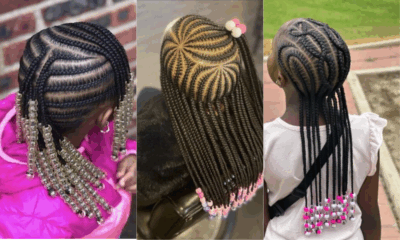
 KIDS HAIRSTYLES2 months ago
KIDS HAIRSTYLES2 months ago20 Back to School Hair style for Black Kids hair
-

 WEDDING9 months ago
WEDDING9 months ago30 African Wedding Dresses That’ll Leave Everyone Speechless!
-

 MEN HAIRSTYLES11 months ago
MEN HAIRSTYLES11 months ago20 Best Back to School Hair Cut For black kids


